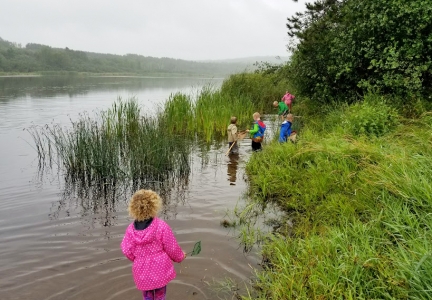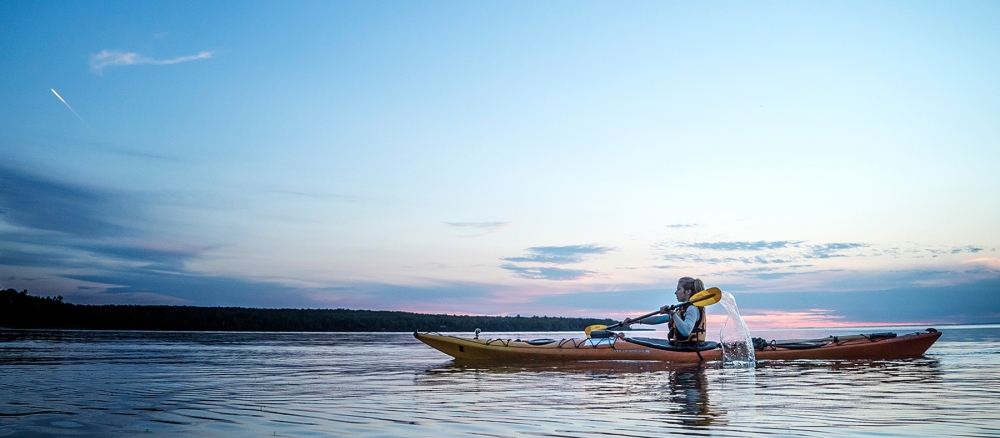For Lexi Bruno, land and water are powerful teachers. Around them, she finds herself in the role of a student even as she connects children with the land, the water, and their community as a teacher at the nature preschool at Wind Ridge Schoolhouse in Duluth.
In 2016, Bruno and a friend circumnavigated Lake Superior in sea kayaks. While the two embarked on the trip to mark upcoming life changes, they also hoped to connect with the lake. “We learned very quickly that Lake Superior would tell us when we needed to get off the water,” she says.

A desire for connection also drives Bruno’s work at Wind Ridge. “As a preschool teacher, I’m connecting children to land that’s been dishonored,” she says. Watching children play in and with the land has been a moving experience for Bruno and a source of hope. She believes that learning to respect our land and water stems from being in relationship with them.
“I took so many lessons from Lake Superior, when I was spending so much time with her every day: how to be brave, how to be hardy,” Bruno says. “I think that has really shaped who I am and how I connect to things.”
Learn more in the We Are Water MN exhibit
Bruno shared her story as a part of We Are Water MN, a traveling exhibit and community engagement program that explores Minnesotans’ relationships with water. Hartley Nature Center in Duluth will host the exhibit beginning in late February.
The Duluth area is home to many bodies of water, including 44 named streams in Duluth alone and Lake Superior, the source of 10% of the planet’s fresh water. Another important part of the area is the St. Louis River and the 12,000-acre estuary where its waters mix with Lake Superior, a place of abundant life, plentiful aquatic vegetation, insect life, fish spawning and rearing, and shorebird nesting and feeding. The Duluth area is beloved for recreation opportunities and natural resources. While collaboration continues for cleanup efforts and restoration, ongoing work is needed to protect these waters.
Visit the exhibit to hear local stories and learn more about water in the Duluth area, February 29 through April 22 at Hartley Nature Center, 3001 Woodland Avenue, Duluth. The exhibit is viewable Monday through Saturday, 9 a.m. to 4 p.m. Admission is free.
Find exhibit and event details on Hartley Nature Center’s website.
About We Are Water MN
We are Water MN is led by the Minnesota Humanities Center in partnership with the Minnesota Pollution Control Agency; the Minnesota Historical Society; the Board of Water and Soil Resources; the Minnesota Departments of Agriculture, Health, and Natural Resources; and University of Minnesota Extension.
The program is funded in part with money from the Clean Water, Land & Legacy Fund — which was created with the vote of the people of Minnesota on November 4, 2008 — and by the National Endowment for the Humanities.
